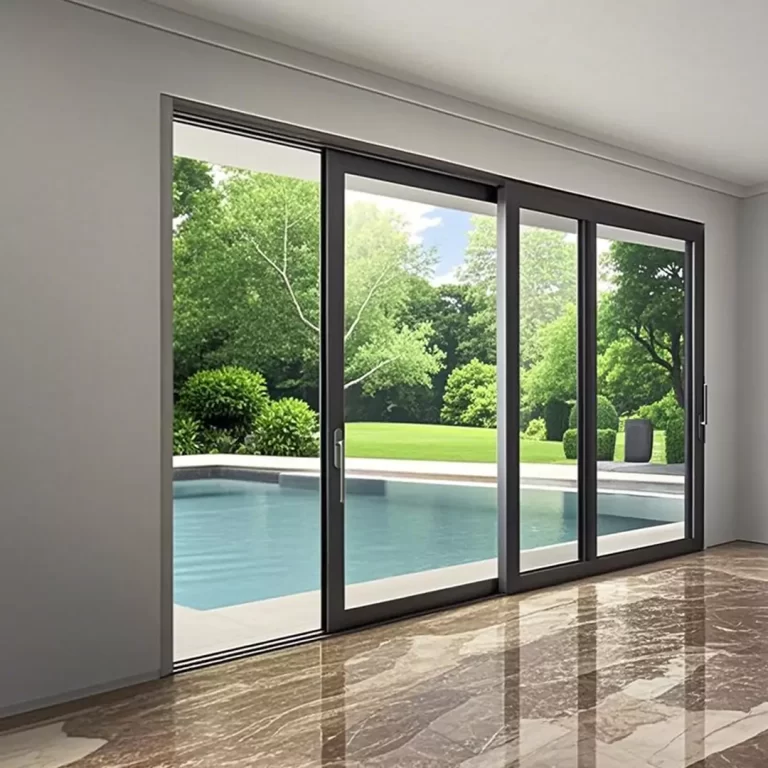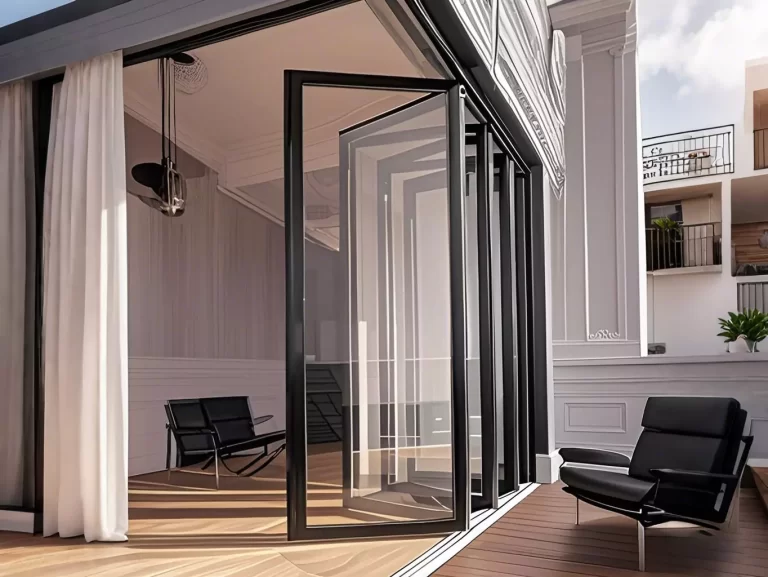Sliding doors are a standard feature in lots of American residences, presenting an elegant way to introduce ample natural light and facilitate expansive openings to the outdoors whilst situations are favorable. notwithstanding their established efficacy, a growing wide variety of chinese language manufacturers have became their interest to boost-and-slide doorways, bringing up diverse design advantages and operational ease.
this article delves into the comparative attributes of lift-and-slide and conventional sliding doorways, elucidating their fundamental differences to useful resource in making an informed choice on your architectural tasks.
Conventional Sliding doors
traditional sliding doors perform the usage of a stationary rail constant to the lowest of the outer body. The door itself is supported via small rollers positioned underneath the panel, which traverse along this backside rail. To make sure ok water and air tightness, traditional sliding doorways hold minimal clearance among the rail and the panel, ensuing in widespread friction and wear on the seals, even if the doorways are ultra-modern. over time, as particles and corrosion exacerbate the discount in clearance and the rollers’ bearings become worse, the doors can end up more and more difficult to maneuver, mainly in large configurations. This degradation is a not unusual trouble discovered in older sliding doors.
Existence SLIDE DOOR,Carry and Slide doors
In contrast, raise-and-slide doors evade the drawbacks of conventional sliding doors through a mechanism that elevates the door earlier than it slides. This design contains an in depth range of sliding configurations, from trendy -panel setups to expansive multi-panel or corner-less arrangements that could span an entire wall or building.
while the handle is turned downward, the door is lifted through a pulley system, disengaging it from its seals and growing enough clearance from the bottom rail. This permits the door to float effects with minimal effort. Returning the take care of to its authentic position lowers the door, re-seating it onto the rail to make sure most beneficial air and water tightness. within the closed function, the rail is correctly shielded from debris and corrosion.
Ease of use
lift and Slide doors: those doorways hire a complicated mechanism that lets in the complete panel to be raised slightly off the music before sliding. Activated by means of a specialized take care of, this lifting movement facilitates smooth and convenient motion, creating expansive openings.
traditional Sliding doorways: those doors rely on a horizontal sliding mechanism in which the panels flow along a tune. This honest motion is area-efficient and requires minimal attempt, making conventional sliding doorways appropriate for areas with constrained clearance.
Water and air tightness
elevate and Slide doorways: thanks to their lifting mechanism, carry-and-slide doors achieve a more relaxed seal whilst closed in comparison to traditional sliding doorways. This better sealing capability reduces air infiltration, improves thermal insulation, and minimizes outside noise.
conventional Sliding doors: although conventional sliding doors offer a fine seal, they will no longer suit the air tightness and insulation capabilities of elevate-and-slide doorways. nonetheless, advancements in design and substances have progressed their strength efficiency and climate resistance.
Aesthetic options
elevate and Slide doorways: to be had in diverse configurations, inclusive of unmarried, double, and multi-panel designs, elevate-and-slide doorways provide full-size versatility in both aesthetics and functionality. They can be customized with various substances, finishes, and glazing alternatives to supplement numerous architectural patterns.
traditional Sliding doors: these doorways are available in an array of patterns and configurations to fit one-of-a-kind architectural alternatives. They may be comprised of materials including wooden, aluminum, or glass, with alternatives for frameless designs or ornamental capabilities.
Get an Thermal Break Aluminum Windows Quote For Your Home →
Space necessities
carry and Slide doorways: The lifting feature of those doorways allows for seamless operation without requiring extra clearance area. This makes them ideal for programs in which swing doors or conventional sliding doors might be impractical.
traditional Sliding doors: recognised for his or her area-saving layout, sliding doors do now not require swing space, making them suitable for rooms wherein maximizing ground space is critical.
Pressured access resistance
carry and Slide doorways: normally incorporating superior locking mechanisms and robust production, carry-and-slide doorways enhance security. The lifting motion guarantees a tighter seal while closed, supplying increased resistance to compelled access. Many structures additionally function integrated multi-factor locking mechanisms for added protection.
conventional Sliding doorways: these doorways consist of locking mechanisms and reinforced frames to deter unauthorized access. even as they will no longer offer the same degree of sealing as elevate-and-slide doors, they can be prepared with cozy locking systems, which includes keyed locks and auxiliary bolts.

Choosing the most reliable alternative
the selection among elevate-and-slide doors and traditional sliding doors hinges on different factors, along with assignment requirements, aesthetic alternatives, functionality, and price range constraints.
For tasks with restricted space in which door movement is limited, traditional sliding doorways may be most excellent because of their space-saving design. Conversely, lift-and-slide doorways provide seamless operation with out requiring additional clearance, making them appropriate for larger openings where traditional doorways might be impractical.
If energy efficiency, noise discount, and weather resistance are paramount, lift-and-slide doors may be the superior desire because of their enhanced sealing homes. but, if those elements are much less vital, conventional sliding doorways can nevertheless provide quality performance when equipped with appropriate glazing and sealing systems.
examine the safety features of each door choice to decide if they meet your venture’s security desires. raise-and-slide doorways often feature superior locking systems and durable construction, improving security. conventional sliding doors also provide cozy locking alternatives but can also vary in safety stages based totally on layout and hardware.
bear in mind the architectural style and design goals of your assignment to pick out the door choice that nice aligns along with your imaginative and prescient. both lift-and-slide and conventional sliding doors offer more than a few patterns, substances, and finishes for personalisation.
Compare the convenience of operation for normal use. elevate-and-slide doors provide handy operation and clean gliding, that’s useful for big, heavy panels. traditional sliding doors also offer ease of use however may also require slightly more effort to perform compared to lift-and-slide options.
eventually, don’t forget your finances and the related costs of every choice. whilst carry-and-slide doorways might also offer superior functions and superior performance, they generally come with a higher fee factor compared to traditional sliding doors. check the price-advantage ratio and prioritize capabilities which might be essential on your challenge within budgetary constraints.
equipped to explore elevate-and-Slide doors? Get in contact with us nowadays for a consultation.











